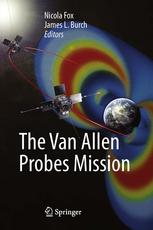

Most ebook files are in PDF format, so you can easily read them using various software such as Foxit Reader or directly on the Google Chrome browser.
Some ebook files are released by publishers in other formats such as .awz, .mobi, .epub, .fb2, etc. You may need to install specific software to read these formats on mobile/PC, such as Calibre.
Please read the tutorial at this link: https://ebookbell.com/faq
We offer FREE conversion to the popular formats you request; however, this may take some time. Therefore, right after payment, please email us, and we will try to provide the service as quickly as possible.
For some exceptional file formats or broken links (if any), please refrain from opening any disputes. Instead, email us first, and we will try to assist within a maximum of 6 hours.
EbookBell Team

4.4
92 reviewsDocuments the science, the mission, the spacecraft and the instrumentation on a unique NASA mission to study the Earth’s dynamic, dangerous and fascinating Van Allen radiation belts that surround the planet
This collection of articles provides broad and detailed information about NASA’s Van Allen Probes (formerly known as the Radiation Belt Storm Probes) twin-spacecraft Earth-orbiting mission. The mission has the objective of achieving predictive understanding of the dynamic, intense, energetic, dangerous, and presently unpredictable belts of energetic particles that are magnetically trapped in Earth’s space environment above the atmosphere. It documents the science of the radiation belts and the societal benefits of achieving predictive understanding. Detailed information is provided about the Van Allen Probes mission design, the spacecraft, the science investigations, and the onboard instrumentation that must all work together to make unprecedented measurements within a most unforgiving environment, the core of Earth’s most intense radiation regions.
This volume is aimed at graduate students and researchers active in space science, solar-terrestrial interactions and studies of the upper atmosphere.
Originally published in Space Science Reviews, Vol. 179/1-4, 2013.